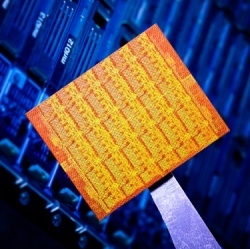
Way back in 1997, when dinosaurs roamed the earth and I was working part-time at the local Babbage’s for $4.25 an hour, I scraped together enough spare change to purchase a 3Dfx Voodoo-based Diamond Monster 3D video card. The era of 3D acceleration was in its infancy and the Voodoo chipset was the chipset to beat. It all seems a bit silly now, but when I slapped that sucker into my aging Pentium 90 and fired up the new card’s pack-in version of MechWarrior 2—which had texture-mapping and visual effects that the original 2D version lacked—my jaw hit the floor. I couldn’t wait to speed-dial my buddy Matt and tell him that his much-faster Pentium 166 no longer brought all the polygons to the yard.
That video card was the most important PC upgrade I ever made, sparking a total change in my perception of what computers could do. I didn’t think I would ever again experience something as significant as that one single upgrade—until the first time I booted up a laptop with a solid-state drive (SSD) in it. Much like that first glimpse of a texture-mapped MechWarrior 2, that first fast boot signaled a sea change in how I thought and felt about computers.
The introduction of 3D graphics changed our perceptions of computing not because it made colors brighter or virtual worlds prettier—though it did those things and they are awesome—but because it made a smoothly responsive 30 and 60 frames per second gaming experience a standard. Solid-state drives have a similar effect. They’re faster than spinning disk, to be sure, but their most important contribution isn’t just that they are faster, but rather that they make the whole computer feel faster. They remove barriers between you and your PC, in effect thinning the glass between you and the things that you’re doing with and through your computer.
Solid-state drives are odd creatures. Though they sound simple in theory, they store some surprisingly complex secrets. For instance, compare an SSD to a traditional magnetic hard drive. A modern multi-terabyte spinning hard disk plays tricks with magnetism and quantum mechanics, results of decades of research and billions of dollars and multiple Nobel Prizes in physics. The drives contain complex moving parts manufactured to extremely tight tolerances, with drive heads moving around just thousandths of a millimeter above platters rotating at thousands of revolutions per minute. A modern solid-state drive performs much more quickly, but it’s also a more mundane on the inside, as it’s really a hard drive-shaped bundle of NAND flash memory. Simple, right?
However, the controller software powering an SSD does some remarkable things, and that little hard drive-shaped bundle of memory is more correctly viewed as a computer in its own right.
Given that SSDs transform the way computers "feel," every geek should know at least a bit about how these magical devices operate. We’ll give you that level of knowledge. But because this is Ars, we’re also going to go a lot deeper—10,000 words deep. Here’s the only primer on SSD technology you’ll ever need to read…
